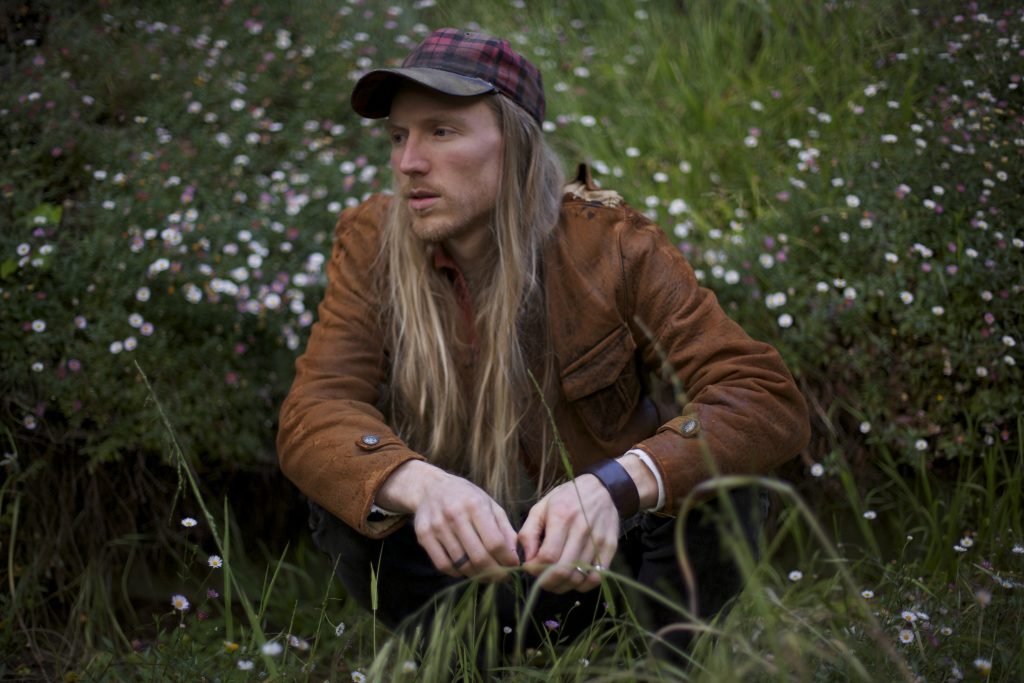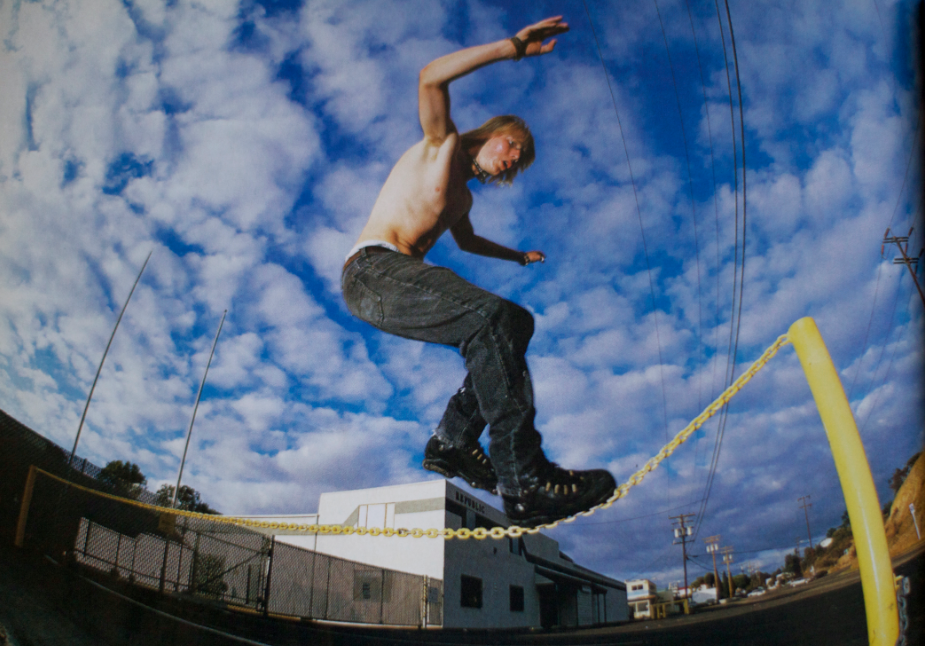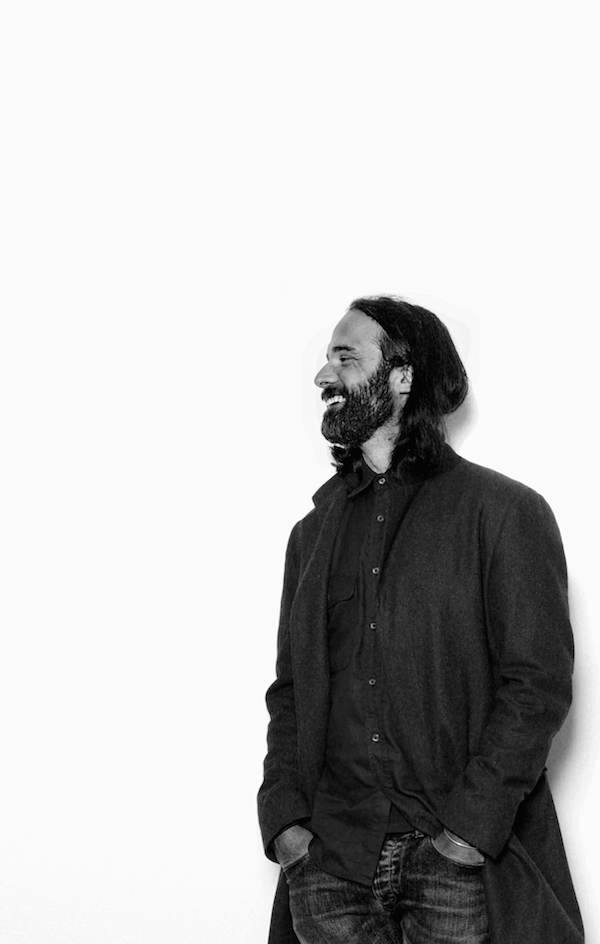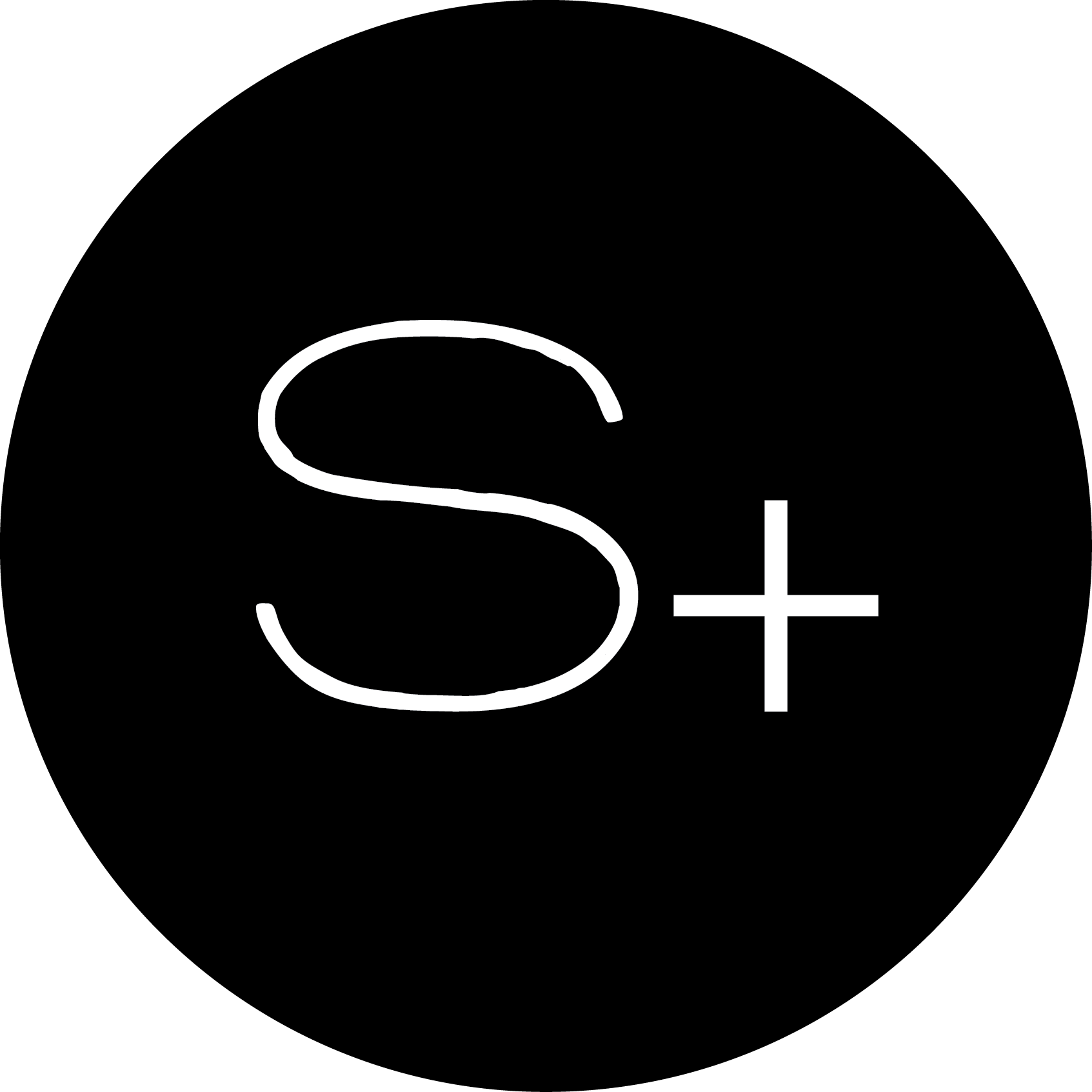PLAY x PLAY: Kai Carlson-Wee
Play by Play is an ongoing series in which we invite a variety of creative minds to explore the importance of play.
Discover how engaging their physical selves helps them to stimulate their creativity while also liberating them from the often stressful and sedentary confines of our technologically dominated era. We hope this series will motivate you to take regular tech breaks and make time to play everyday. It’s good for your physical health and crucial for your imagination.
KAI CARLSON-WEE has rollerbladed professionally, surfed north of the Arctic Circle, and traveled across the country by freight train. He has received fellowships from the MacDowell Colony, the Bread Loaf Writers’ Conference, the Sewanee Writers’ Conference, and his work has appeared in Narrative Magazine, Best New Poets, TriQuarterly, Blackbird, and The Missouri Review, which selected his poems for the 2013 Editor’s Prize. His photography has been featured in Narrative Magazine and his poetry film, “Riding the Highline,” won the jury award for Innovation in Documentary Short Film at the 2015 Napa Valley Film Festival. With his brother, Anders, he has co-written two chapbooks of poetry, Mercy Songs (Diode Editions) and Two-Headed Boy (Organic Weapon Arts), winner of the 2015 Blair Prize. A former Wallace Stegner Fellow, he lives in San Francisco and is a Jones Lecturer in poetry at Stanford University.
Any poet who’s honest about it will tell you that poetry is a complicated, fucked up thing. It’s not as simple as doing some homework, reading some books and imitating the style of someone famous. It’s a mysterious and dangerous job, if it’s taken seriously. It announces itself at odd times, in weird, unpredictable moments. It surprises the writer like blood from a wound, or like cold in the space of a shadow.
Often when writers talk about writing they talk about the importance of reading. They talk about writing communities and ways to keep themselves inspired. They talk about practical solutions for writer’s block, making money, applying for grants, etc. Every time I hear this advice I feel a little bit nauseous. It puts me in a shaky mood.
I don’t know if it’s an attempt to be humble, or to align themselves with American, product-oriented sensibilities, but the advice feels aimed at an audience of investors. It sounds convincing but it feels fake. It implies an equation: if you do X, you will write Y. If you read this poet, this book on craft, if you keep trying to edit and workshop your poems, you will eventually reach your goals. I think what bothers me about this advice is that it ignores the power of experience. It ignores life. It suggests that poetry is about learning, rather than doing, reflecting the world, rather than being in the world.
This might sound strange, but when I think about where I learned to write, what drives my work, I think about rollerblading. I don’t think about reading other poets. I don’t think about classes in college. I think about rolling over a concrete surface, searching a city for ledges and rails and anything else I could skate.
To give some context, I was raised in a small town in southern Minnesota, a block from a cereal factory and a train yard. Two blocks in the other direction was the church where my dad worked as a pastor. The other directions brought a river, an old folks home, and eventually fields and fields of corn.
There wasn’t much going on in town, so my brother and I would play made-up games in the woods and surrounding yards. We used walnuts and hockey sticks, go-carts and jump ropes. We invented scenarios and alternative realities. We had this one game called Alligators we used to play in the basement that involved a foam pad stretching down the stairs and an alligator pit at the bottom. One person would cling to the top of the stairs and the other person would be the “alligator” leaping to grab their legs. Some games were simple, some more complex, but we played these games as much as we played Nintendo and traditional sports. Over the years, I played football, basketball, baseball, soccer, and just about every other after-school sport. I liked the intensity, and I was athletic enough to compete, but I had issues with authority and there was a part of me that still wanted to play the imaginative games I played as a kid.
When I was thirteen I found rollerblading. I remember my friend Kevin coming over with these brand new black and gold Bauer skates, and he was like, “Dude, you gotta get some of these.” I remember watching him roll down the street and air off the lip of a curb. It looked rad. There was something wild and graceful about it, something a little unhinged.
My thirteenth birthday was coming up soon, so I asked my parents for skates. The first summer was all about bombing hills, jumping down stair-sets and parking lot gaps. Very basic stuff. At some point, my friend’s cousin came down from Minneapolis and told us about these mythical street skaters from the city. He said there were people doing tricks, grinding ledges, doing flips, etc. To prove it, he rolled up to a curb and did a perfect 180. I remember this weird sensation in my brain where I felt this door swing open. Somehow the concept of “tricks” hadn’t occurred to us. We’d seen people do tricks on skateboards and bikes, but rollerblading was completely new and had barely begun to develop. You have to remember, this was before the X-games and the commercialization of skateboarding. Before the 900, Tony Hawk’s Pro Skater, Jackass, Bam, Baker, and whatever else came with it. During the early nineties, skateboarding and rollerblading were both considered weird things to do, and the rollerblading scene was exploding with inventiveness. Every month a new trick would come out. By the time you learned it, another one would appear in a video or magazine. It was always changing.
One of the main things I learned as a skater was divergent thinking, in the ability to see multiple uses for landscapes. A handrail was something to grind down. A gap between parking lots was something to clear. When you’re skating, you’re constantly thinking of alternative options for sculptures, planters, ledges, banks, etc. I spent almost every day during high school skating obstacles not meant to be skated. My friends and I would go downtown after school and make up all kinds of improvised spots. A loose sheet of plywood became a launch ramp. A fallen-down tree was a thing you could peel the bark off and wax with a candle. There was no limit to the stuff you could dream up, and because there were no rules, and because skate culture valued style as much as it valued skill, you could invent these new tricks and people would dig it. The spontaneity and improvisation was part of the game. You would move through an environment and imagine possibilities, rather than realities; motion, rather than the concrete sprawl of a city.
When I think about writing, and poetry in particular, it’s very similar. The goal is to think about language in new ways, at weird, unpredictable angles. You are allowing your brain to create new patterns of words and respond intuitively to the world around you. There’s a flow and concentration you enter, similar to the focus you use in skating. When you practice tricks over and over you develop muscle memory associations. After years of doing the same exact motions you can become so fluent that the effort disappears and you operate only by feeling. You feel your way into tricks, rather than thinking your way into them. People often talk about flow-states in art and athletics, but when you’re attempting complicated tricks with a high level of danger you can actually feel the flow takeover. Your mind becomes clear, your focus narrows down, and you get the sensation of release, of giving yourself away. Skaters see urban landscapes emotionally, with an open, intuitive eye. The relationship to a certain handrail becomes personal, and the flow is more urgently felt. Because of the heightened connection and attention, the experience can be almost spiritual.
There was one time I was skating this big drop-off rail. It was massive, dropped twenty-five feet onto concrete on one side, and I was having some trouble with fear. I thought about the trick for months and it started to haunt me obsessively. I’d been to the rail numerous times but I just couldn’t psych myself up. The rail was high and it created a weird optical illusion when you approached. My body would immediately freeze up. I would roll to the rail, punch myself in the face, scream, blast music in my headphones—anything to override the fear. Then one day I went to the rail and something was different. I imagined the trick for about half an hour and then I entered a different level of awareness. The adrenaline disappeared and I just floated over the concrete. Everything was so clear. I don’t even remember skating up to the rail or jumping, I just remember telling myself to go, and when I came off the rail I felt this humongous release. It felt like I was made of clouds. There was an atmospheric, dissociative sensation, and I immediately wanted to die. I felt so complete and diffused in the moment, I wanted to drift in the purity of that feeling forever.
When I write poetry I try to invest it in a similar type of energy. I try to create associations and symbolic connections that stem from a primitive space. I want to feel carried by something beyond my own mind and body. One of the big differences between skating and writing poetry, is that skating requires fear. It requires your active experience and presence. Every time you go out skating, something is at stake, and it makes you emotionally aware of the world. Too often, writing can start to become an occasional routine. A poet can get wrapped up in the politics of the poetry biz, start a career, get worn out, start parodying the work of better poets. They can ride on wave like this for a lifetime. When you read poets like Larry Levis, Rainier Maria Rilke, Brigit Pageen Kelley, Sylvia Plath, Yeats, etc., there’s a sense that their words are spirit-born, able to float on a rhythm of presence and urgency. They are able to transcend the limits of language and open themselves up to possibility. How do they do it? It’s a little bit of a mystery, but I’ve found that, personally, when I write with an active engagement in the world, when I try to invest in the urgency of experience, in the potentials of each environment I move through, and try to remember that something is always at stake, I can enter a deeper connection to language, and feel my way to the words.
I’m not saying the daily grind isn’t important. Workshops are important. Reading is important. But for me, writing poetry is not just about telling stories and exploring identity. It’s not about getting poems published in magazines and journals. It’s not about awards. It’s not about a career. It’s about giving yourself away to a larger force. It’s about riding intuitive rails of thought and losing yourself in the pure fire of existence. The goal is not the poem itself, but the invention of language, the evolution of the human soul by expanding the realm of emotion. It’s about imagining a style that hasn’t been known yet. A world that springs from breaking the rules, from throwing yourself repeatedly at the walls of your own limitations. Poetry requires scars, it requires guts, and it requires living. It requires a fear and a childish thrill. Forget all the practical advice you’ve heard about being patient and doing the menial work of publishing. That road means nothing. In its deepest, most essential form, poetry is about the flicker and dance of the spirit, and it requires your whole life and attention to do it. It requires experience, it requires danger, and it requires attention beyond the page. The goal is not to describe the world, but to imagine the world to come.
K.C-W. 2016
Published: May 12th, 2016








[…] a sample of Kai’s poetry, check out his essay on rollerblading in Seymour Magazine, or check out Mercy Songs, a chapbook of poetry from Kai and […]